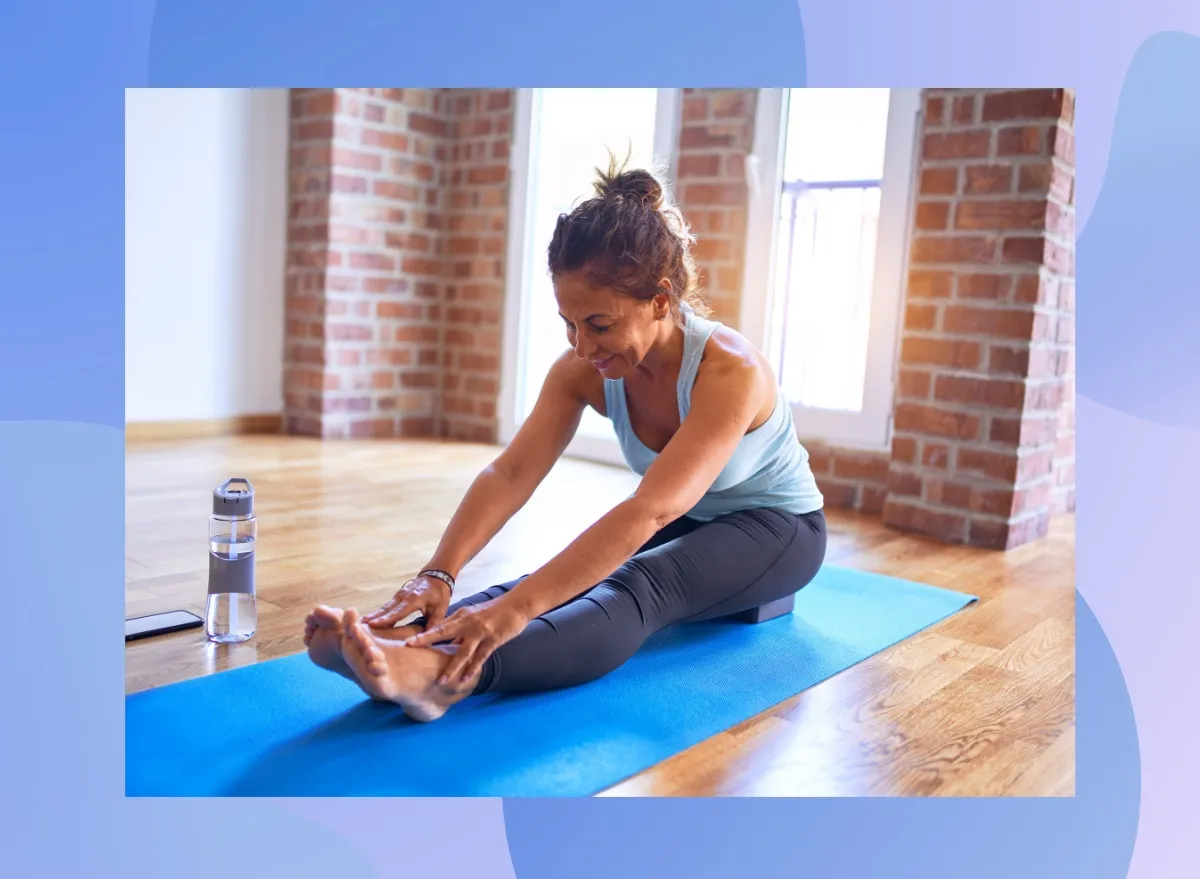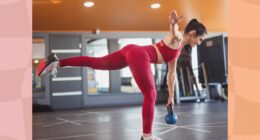From migraines to IBS, back pain and hair loss, millions of us suffer health problems triggered by stress and anxiety. Here’s how to deal with them
Migraine
Nine out of 10 patients who see their GP about headaches have migraines. They affect one in seven people, with an estimated 190,000 attacks each day in the UK. Peter Goadsby, professor of neurology at King’s College London, encourages anyone who gets them to try all available treatments. “Try one for three attacks, and if it doesn’t work then it’s probably never going to. You’ve got to move on to the next one.”
While genetics and monthly hormonal changes in women play their part, many people say that stress can bring on or exacerbate their migraines. But they often come just after a stressful period rather than in the thick of it. “Patients often say that it’s Saturday morning or when they have the pressure of work and then the letdown – and the problem is that we can’t stay stressed all the time [to avoid the migraine]. People have the highs and lows of life, and you don’t want to have a boring life just as a way of getting rid of migraines.”
Migraines can cause a fair bit of stress themselves. An attack can start hours or days before the pain arrives, bringing problems with concentration, mood change, fatigue, light sensitivity or neck discomfort. “Consider for a moment what life would be like if you couldn’t focus on things – everything would seem more stressful, not because it is, but because the brain has already started the migraine attack.”
There aren’t any specific stress-management techniques for migraine – finding the best treatment is trial and error. Once you’ve exhausted taking aspirin, paracetamol or ibuprofen as soon as you think an attack is imminent, talk to your GP about triptans – a well-established group of medications. “About two out of three people will find significant relief within about two hours of taking them,” says Goadsby. “About a third will find that it doesn’t make any difference, or they’ll get some intolerable side-effect.” Luckily there are six to try, in tablet form or as a nasal spray.
Goadsby’s life’s work has been developing a new class of medicines called calcitonin gene-related peptides (CGRP), which block molecules involved in causing attacks. Already available are CGRP monoclonal antibodies. These work to prevent attacks and are self-injected either monthly or every few months. “They’re effective and incredibly well tolerated,” says Goadsby. “You can go on and function, do your work.” Two more types – also working with the CGRP pathway – are in the pipeline: a preventive in tablet form and a treatment to take once an attack has started. He recommends checking in with the Migraine Trust (of which he’s a trustee) for the latest developments.
A more invasive option, botulinum toxin – Botox – is sometimes prescribed for chronic migraine (more than 15 days of headaches a month) if three other preventive treatments haven’t worked.
If you want to go DIY, it could be worth trying a vitamin B2 (riboflavin) supplement. “There’s a small, very well-done study which showed modest preventive effects,” says Goadsby. “There’s some weaker evidence for something called coenzyme Q10. And there’s mixed evidence for taking the herb feverfew as a preventive. My impression of that is it’s pretty much nonsense. The important thing is to have this range of options, and not to give up.”
Hair loss
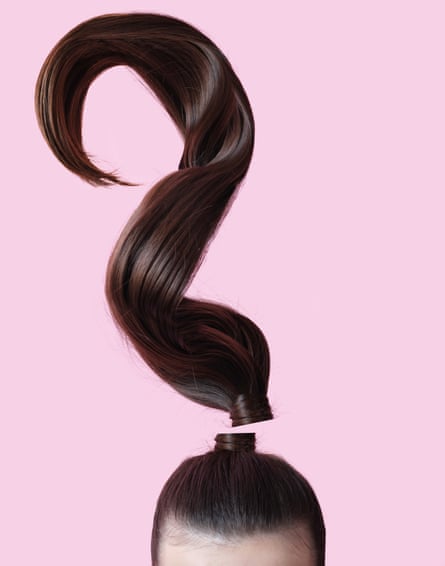
“We have loads of people who say, I was fine, and then I got divorced, or made redundant, and my hair fell out,” says Professor Anthony Bewley, a psychodermatology specialist at the British Association of Dermatologists.
Healthcare professionals don’t always pay enough attention to hair loss, but seeking a quick diagnosis is important because different types require different treatments. “There is a load of unregulated material on the internet,” says Bewley, “and it is unbelievably confusing finding what is reliable and appropriate for your particular problem.”
His first prescription is exercise, which, he says, “promotes better hair growth, and regrowth”. For the majority of cases of what Bewley calls “generalised scalp hair loss”, being low in iron or vitamin D – which can be stress-related – plays a part, so take supplements if necessary. “Consider using minoxidil (the active ingredient in Regaine),” he says, “which you can buy across the counter. It can be really helpful for any non-scarring alopecia. If none of those work, see your dermatologist or doctor as you may have a scarring hair loss.” These irreversible hair-loss conditions require topical steroids, often followed by an anti-inflammatory drug called tetracycline.
Irritable bowel syndrome
For those with IBS, when stress induces fight-or-flight mode, it sends signals to the gut to slow digestion, says Rona Moss-Morris, professor of psychology at King’s College London, “or you might suddenly need to go to the toilet. We’re trying to teach people to think, when I’m starting to feel stressed, how do I recognise those physiological signals? And are there things I could do to try to stop my autonomic nervous system kicking in every time I’m stressed?”
Moss-Morris suggests doing something relaxing like going for a walk: “Whatever helps reduce that anxiety. Rather than saying, ‘I can’t be stressed,’ it’s more, when I am, what do I need to do to calm my body down?”
Food can become an anxiety trigger. “When we do cognitive behavioural therapy (CBT) for IBS, we look at eating patterns and how people respond to food, and if people are eating healthily and regularly, because that’s how our guts like it.” Do not necessarily fear the gurgling of an empty stomach – having regular breaks between meals is good for our guts.
In a trial, Moss-Morris and colleagues found that telephone or online CBT led to less severe symptoms and a better quality of life – “and we can sustain those effects at 12 to 24 months”. The therapy includes building healthy eating and exercise routines, techniques to identify and challenge unhelpful thoughts about the condition, stress- and sleep-management techniques, and work to change behaviours related to anxiety about IBS symptoms, such as not going out until bowels are empty, or a toilet location is known.
Feeling anxious about foods is a natural response to having IBS, but try to restrict your diet as little as possible, says Moss-Morris. “Research into the microbiome suggests that diversity, particularly plant diversity, is good.”
You can’t cure IBS, and much of the evidence for treatments is weak to moderate, but among first-line things to try to manage symptoms such as abdominal pain, diarrhoea or constipation are antispasmodic medicines. These can bring unwanted side-effects, in which case, “peppermint oil might help with the pain”, says Moss-Morris. “Your GP can prescribe medications for constipation and diarrhoea if over-the-counter ones don’t work, and these can have significant effects on symptoms.”
Soluble fibre such as ispaghula is worth trying, taking care not to confuse it with the insoluble fibre found in wheat bran, which can exacerbate symptoms. Research suggests it is worth trying probiotics, but if there’s no effect within 12 weeks, you might as well stop.
The low Fodmap diet – which avoids foods high in short-chain carbohydrates that are poorly absorbed – can be followed temporarily, says Moss-Morris, but only “under the supervision of a dietitian”.
If none of these things work, she says, “there is some evidence that antidepressants called tricyclics, such as amitriptyline, used in doses below the range that have psychiatric antidepressant effects, help some people with symptoms like pain and difficulty sleeping”. A large-scale trial is continuing. “Nobody should have to have these symptoms for years. It’s an incredibly distressing condition.”
Teeth grinding
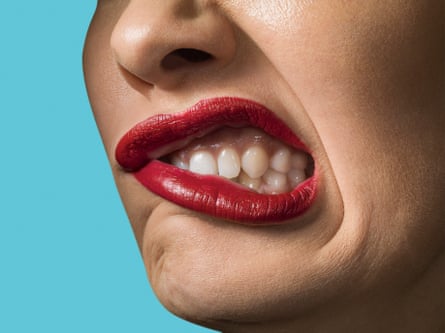
Teeth grinding – or bruxism – falls into two distinct categories, says Gilberto Melo, dentistry researcher at the Federal University of Santa Catarina in Brazil; “sleep bruxism and awake bruxism”. Stress – as well as psychosocial conditions such as depression, anxiety and post-traumatic stress disorder – can be implicated in both. A 2021 Italian study found that during the pandemic almost half of 500 people surveyed said they were grinding their teeth more, with 32% experiencing pain in their facial muscles and 50% getting more headaches and migraines.
Melo says some antidepressants, as well as recreational drugs and “consumption of alcohol, caffeine and tobacco have been linked to the occurrence of bruxism, particularly during sleep”. There’s no cure, but any reduction in symptoms is worth pursuing.
There’s good evidence for using occlusal splints (mouth guards which are made to measure by specialist dentists) at night. “They allow masticatory muscles to relax,” says Melo, “while protecting the teeth.” Some people find facial massage helpful in relaxing jaw muscles (one friend swears by rolling a weighted ball over them). We’re entering the realm of scant data now, but Melo says, “There are some suggestions that using smartphone apps to monitor and alert for daytime clenching (such as BruxApp) can help patients voluntarily reduce clenching and thus minimise muscle pain.”
Inflammatory skin disease
Not only are mental health conditions and stress associated with skin diseases, says Bewley, but “there are very clear physical links through the cutaneous nerves between the brain and the skin”. We know for sure, he says, “that if you have the genetic likelihood for a whole range of different inflammatory skin diseases like psoriasis, eczema, acne or vitiligo, a stressful life event can precipitate the skin problem”.
When any of these conditions flare up, the top priority is to talk. “Talk to healthcare professionals, and if they’re not hearing you, find another one,” says Bewley. “Talk to family, friends, talk to your group – for example, there are lots of people of colour for whom losing pigmentation with vitiligo can affect ethnic identity. And we know that half the benefit of treatment is from just talking about it. If you’re having an acute flare-up, or if you’ve developed a condition, talking about it not only improves how you feel, but it also improves the skin.”
Next comes looking at your sleep. “We know from lots of research that having less sleep and less quality sleep exacerbates skin diseases,” says Bewley. Try to keep a regular sleep routine, going to bed at your usual time and, even if you’re not sleeping, try to stay in bed. Ban screens from the bedroom. “Relaxation techniques before bedtime really help,” he says. “Sitting in silence, or having a nice warm bath. If stressful thoughts take over while you’re trying to sleep, try not to panic – just recognise those thoughts and let them go away.
READ RELATED: This Nurse’s TikTok About Passing a Decidual Cast During Her Period Is Harrowing
“Regular exercise really helps with skin,” he continues. “It helps reduce the inflammation that is causing the skin problem. It promotes better repair of the skin, whether it be pigmentation or reforming barrier function. You’re improving blood flow, and the inflammatory mediators in the skin are switched off by exercise.”
Diets high in fat, salt and sugar, as well as alcohol, are “quite pro-inflammatory”, he says. “Steering more towards fruit and vegetables and plant-based diets is anti-inflammatory. Research tells us this time and time again, and that feels fairly intuitive when you think about it.”
If you have eczema, avoid soaps and detergents, and use gentle moisturisers. Anti-inflammatories might be appropriate for eczema as well as for vitiligo, says Bewley – “usually a mild to moderately potent topical steroid – the pharmacist can advise you. Similarly, you can try those things for acne, along with specific things like cleansers which contain salicylic acid, such as Clearasil, or other non-oily cleansers like Cetaphil.” It’s worth talking to a pharmacist about which over-the-counter treatments to try.
Neck, shoulder and back pain
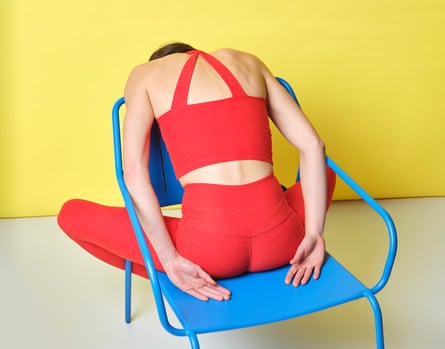
Sometimes previous injuries can flare up with colds, flu and stress because our body is on alert, says Matthew Harrison, a physiotherapist specialising in musculoskeletal conditions and one of the first contact physios based in GPs’ surgeries across the UK. “We spend a lot of time talking about expectations,” he says, “because if something’s been going on for 20 years, it’s unlikely that we’ll get a complete resolution and it’s important to understand how the pain is affecting that person.”
One thing that has helped to ease the tide of new symptoms people have experienced over the pandemic has been getting back to old routines. Avoiding social isolation and talking about stresses and worries with others can help.
It is important to look at how you’ve been using your body, both in longstanding ways but also when doing anything new, says Harrison. Seasonal changes such as new year can see people starting new exercise regimes that cause injuries, but “it’s often about looking at what you do throughout the week that might aggravate it”. More often than not, working in the same position for hours on end is to blame – simply remembering to use your less dominant hand to open doors or to control your computer mouse can work wonders.
For many of us, being more active is all that is needed to ease our strains. “The NHS recommends adults do 150 minutes of moderate intensity activity, or 75 minutes of vigorous activity a week,” says Harrison. “In terms of the upper back and shoulders, people might spend lots of time at a computer and it starts to hurt them towards the middle or end of the day. Take lots of little breaks to try to avoid that, or try a standing desk. It’s not the activities we do, it’s the amount of time we spend doing them. So try to break that activity up.”
Harrison suggests putting strategies in place such as using your standing desk towards the end of the day, so you can move around more. “If that’s not possible, can we change location, move upstairs or go to a coffee shop we feel more relaxed in? Even the walk to that location is good for our general activity, but also the chairs will be different, which will give us a change of position.
“It’s not bad to prod and poke sore parts,” he says. “If something feels really tight and stiff, try to stretch those muscles. I’d always keep within the guidance of stretching for 30-60 seconds, three or four times, and the stretch will gradually increase over time.
“But activity is most important,” he says, “because the problem is probably there because one part is having to compensate because of an underlying muscle weakness. Go to a physio and get specific exercises if the pain is really persistent.”
Whether to ease pain with heat or cold is generally down to personal preference. Harrison says that with recurring issues, “most people react well to heat, in the form of a warm bath or a hot-water bottle, because we’re more relaxed when we’re warm. If we’ve been in stressful environments or been tense for several hours, a warm shower or bath will help take the tension away. But if you get an acute injury, ice is best to reduce inflammation.”
An over-the-counter pain-relieving gel such as Voltarol, a topical nonsteroidal anti-inflammatory, brings the benefit of having less systemic effects than taking oral ibuprofen, he says, “but you’re only addressing the symptoms, rather than the longstanding cause. And your body can develop resistance to the painkiller in the longer term.” Over-the-counter oral painkillers can help, too, says Harrison, “but if you get to the stage of trying medication, it’s probably time to talk to your GP or physio for guidance”.
Stretch … and relax!
Matthew Harrison’s top exercises for neck, shoulder and back pain

Knee rolls
Lie on your back on a firm but comfortable surface – a yoga mat or a large soft towel on a firmer floor will be fine. Then raise your knees and bend your hips to about 45 degrees.
Slowly move your knees to one side, keeping your shoulders on the floor. You can hold in one position for a longer stretch, or gradually roll your knees in the other direction, depending on what feels better for you.
You should feel a stretch in the lower part of your back and possibly in the outside of your legs.
Bridging
Lie on your back on a firm but comfortable surface. Then raise your knees and bend your hips to about 45 degrees.
Pushing weight through your heels, lift your bottom off the floor, pushing your tummy up to the ceiling. Hold for a few seconds and then return to lying.
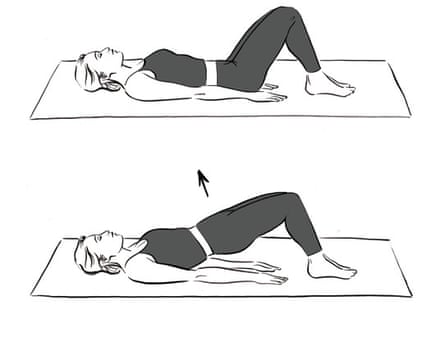
Child’s pose/lower-back stretch
Kneel down on all fours. Bring your bottom down towards your heels as far as you can (don’t worry if you can’t bend your knees all the way), while keeping your hands on the floor – they should now be out in front of you. You should be able to feel a stretch in your lower back.
You can hold in this position or gradually lift your bottom back up the starting position and slowly repeat.
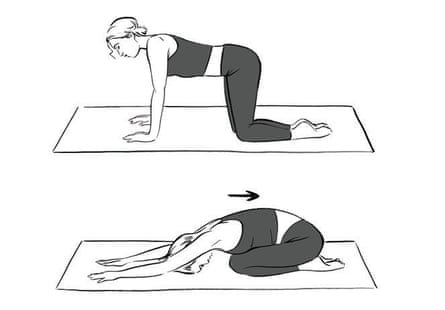
Shoulder and neck stretches
Sit or stand in a comfortable position so you feel relaxed. Then work through the following routine.
Roll your shoulders forwards five times and then backwards five times. We spend a lot of time reaching out in front of us, particularly if we work at computers, so our upper back muscles can become stiff and tight. To relieve this, move the shoulder blades backwards and try to touch them together. You should feel a stretch in your upper back and maybe in your chest. Then rotate your head very slowly until you are looking over one shoulder, and then the other. Then look down, moving your chin as close to your chest as you can.
Most of us will experience tightness in some of these positions, so when one feels tight, just hold that position for several seconds. You can also try this routine standing under warm water in the shower to help you relax.
Stretching the muscles in your neck is very safe, but stop if you experience any dizziness or light-headedness, and avoid extending your head backwards for longer than a few seconds as this can be uncomfortable or cause dizziness.
All stretches should be held for 30 to 60 seconds.
Repetitions for exercises: do three or four sets of 10 to 12. If in doubt, discuss with a qualified healthcare professional.
Source: Health & wellbeing | The Guardian


